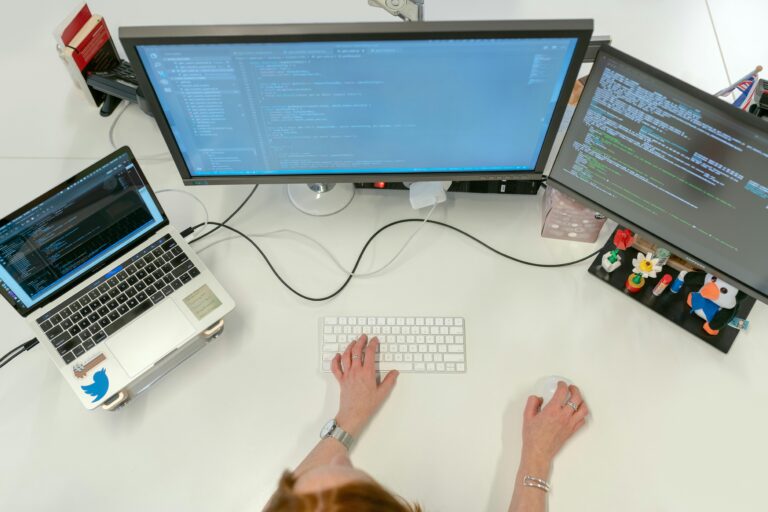We hear the word “development” all the time web development, app development, software development but what does it really mean?
In simple words, development in tech refers to the process of creating digital products, like websites, apps, and software systems. But there’s a lot more to it. Whether you’re starting out, switching careers, or just curious, understanding this term helps you see the bigger picture of how tech works today.

Let’s break it down, the Beemytech way simple, detailed, and beginner-friendly.
🧩 What is Development in Tech?
Development is the creation, building, testing, and maintenance of digital solutions. These could be:
- Websites (like WordPress)
- Mobile apps (like WhatsApp)
- Software (like Microsoft Word)
- Games (like Unity-based games)
- Systems (like a hospital management system)
Every solution goes through planning, designing, coding, testing, and finally launching. And it doesn’t end there developers also fix bugs and add new features after launch.
⚒️ Types of Development Explained (With Examples)
1. Web Development
This includes creating websites or web apps.
- Frontend Development: What users see (buttons, images, layout).
- Tools: HTML, CSS, JavaScript
- Backend Development: Behind-the-scenes logic, servers, and databases.
Real-world example: Amazon’s website = Frontend + Backend working together.
2. Software Development
Focuses on building computer programs or software.
Fun Fact: Most desktop apps you use daily are built by software developers.
3. Mobile App Development
Building apps for phones (iOS or Android).
- Tools:
- For Android: Android Studio
- For iOS: Xcode
- Cross-platform: Flutter, React Native
Examples: Swiggy, Uber, Instagram all are mobile apps.

4. Game Development
Creating digital games using engines like:
Game dev includes storytelling, character design, and lots of testing.
5. Full Stack Development
When a developer does both frontend and backend.
- Tools often used: MongoDB, Express.js, React, Node.js known as the MERN stack.
Want to learn this? We’ll soon have a free guide on Beemytech!
🧠 Why Development is Important (In Real Life)
Still wondering why it matters?
- You wouldn’t have Google Maps without developers.
- No online shopping without eCommerce development.
- No Netflix without backend video streaming tech.
In short, developers build the tech world around us.
🔗 Must-Know Tools & Websites for Developers
Here’s a list of some essential platforms and tools used in different development areas:
| Purpose | Tools/Links |
|---|---|
| Learning Code | freeCodeCamp, Codecademy, W3Schools |
| Version Control | Git, GitHub |
| Code Editors | VS Code, Sublime Text |
| Hosting Websites | Netlify, Vercel, GitHub Pages |
| Deployment | Docker, Heroku, Firebase |
| Project Collaboration | Trello, Notion, Slack |
Bookmark them they’re gold if you want to dive deeper.

👨💻 Development Careers: Where Can You Go?
If you learn development, here are some exciting roles:
- Frontend Developer
- Backend Developer
- Mobile App Developer
- Software Engineer
- Game Developer
- DevOps Engineer
- Full Stack Developer
Good news? Many companies hire freshers if you can build a solid portfolio (more on that soon on Beemytech!).
🚀 How to Get Started with Development?
Here’s a simple path you can follow:
- Pick a path – Web, mobile, or software?
- Learn the basics – Use sites like freeCodeCamp
- Practice – Build small projects.
- Use GitHub – Start uploading your code.
- Collaborate – Join open source or team up with friends.
Start small, but be consistent. That’s the real key.
🧾 Summary: Development Isn’t Just Coding
To sum it up:
- Development = Building digital solutions
- Many types: Web, software, mobile, game, full stack
- Important tools: VS Code, GitHub, Firebase, Docker
- Career options are vast and growing
- Start with free tools and grow with practice
✍️ Final Thoughts
Whether you’re a complete beginner or someone brushing up their basics, understanding development is your first step into the exciting world of tech.

Keep learning, keep building, and remember every app, website, or software began with a single line of code.
Thank you for visiting! Check out our blog homepage to explore more insightful articles.



